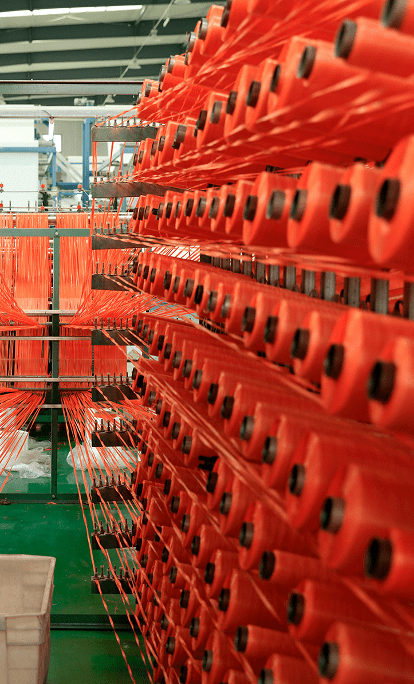2024Yearly Report
ANNUAL IMPACT REPORT
Download PDF
Aii’s Strategy to Enable Suppliers to Reduce their GHG Emissions
From Strategy to Day-to-Day Integration
At the beginning of 2024, we established a cross-functional task force, playfully referred to as “Tiger Teams,” to move our strategy of enabling the reduction of 100 million tonnes of CO2e from the apparel and footwear supply chain by 2030 from idea to daily action. These three Tiger Teams worked across three major pillars — supplier engagement, decarbonization solutions, and sustainable finance solutions.
During Q1 and Q2 2024, the Tiger Teams collaborated across the organization and with external partners to develop roadmaps with key outcomes in 6-, 12-, and 18-month increments, ensuring supplier engagement, decarbonization solutions, and sustainable finance
remain central to Aii’s value proposition.
During Q1 and Q2 2024, the Tiger Teams collaborated across the organization and with external partners to develop roadmaps with key outcomes in 6-, 12-, and 18-month increments, ensuring supplier engagement, decarbonization solutions, and sustainable finance
remain central to Aii’s value proposition.

Our Strategic Framework
Aii, in partnership with Cascale and RESET Carbon, conducted an initial study based on FEM 2021 data, then updated with FEM 2022 data. The findings revealed the 1,800 highest emitters account for approximately 80% of global textile emissions. These facilities are distributed globally, with concentrations in China, Bangladesh, India, Vietnam, Indonesia, and Türkiye. We’re “following the carbon” and prioritizing a large portion of our efforts in China, India, Bangladesh, and Vietnam over the next 18 months.
Our Supplier Journey Map is the tool unifying our work, taking a supplier-centric approach to meet suppliers where they are — rather than being constrained by predefined programs. Our goal is to look at three pathways where Aii can engage suppliers: strengthening existing supplier relationships (Pathway 1), activating high-impact suppliers identified in our study (Pathway 2), and supporting brand partners with suppliers outside these groups (Pathway 3).
Our Supplier Journey Map is the tool unifying our work, taking a supplier-centric approach to meet suppliers where they are — rather than being constrained by predefined programs. Our goal is to look at three pathways where Aii can engage suppliers: strengthening existing supplier relationships (Pathway 1), activating high-impact suppliers identified in our study (Pathway 2), and supporting brand partners with suppliers outside these groups (Pathway 3).
Our Path to 2030
Maximizing our impact through 2030 hinges on our ability to identify and support the development of a pool of low-carbon suppliers. Alongside our partners at Cascale, we will deploy an Industry Decarbonization Roadmap with coordinated activities and aggregated resources for Industry Strategic Suppliers — a group of 1,800 suppliers accounting for roughly 80% of emissions as indicated by Higg FEM 2022 data.
To measure the impact of the low-carbon supplier pool, Aii is leading the development of industry-accepted benchmarks for GHG emissions and energy use for apparel and footwear manufacturing.
We intend for participating suppliers to not only gain recognition for their achievements but to also provide a clear business case for decarbonization as Aii and our partners align sourcing strategies and policies with high-performing facilities using the carbon benchmark. apparel impact
To measure the impact of the low-carbon supplier pool, Aii is leading the development of industry-accepted benchmarks for GHG emissions and energy use for apparel and footwear manufacturing.
We intend for participating suppliers to not only gain recognition for their achievements but to also provide a clear business case for decarbonization as Aii and our partners align sourcing strategies and policies with high-performing facilities using the carbon benchmark. apparel impact


